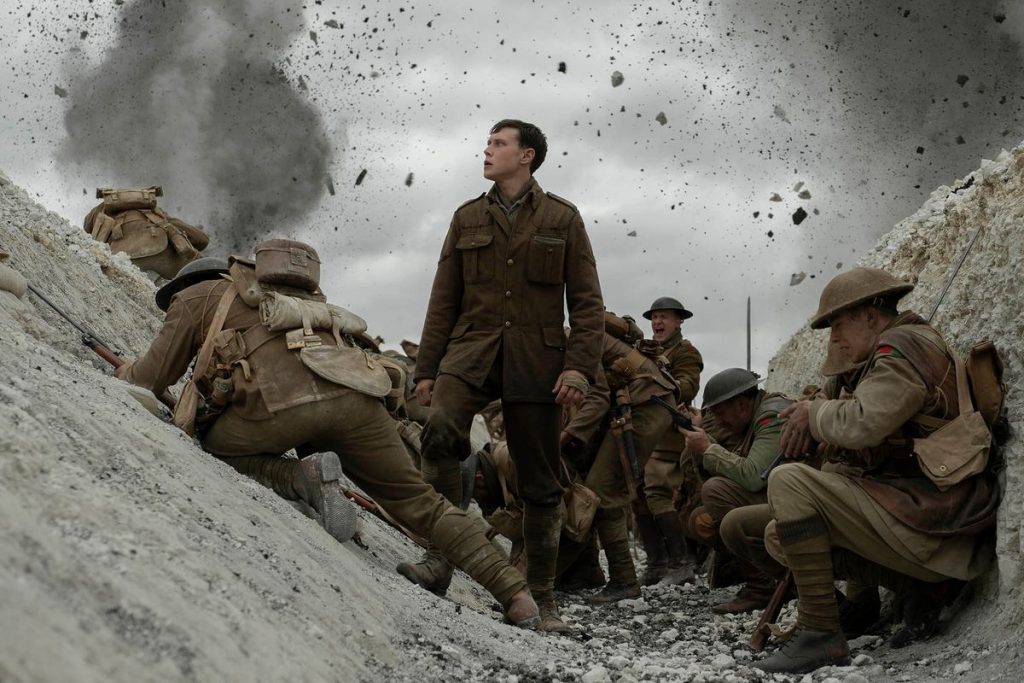1917 feels like the cinematic version of a video game, brought to life with a great detail of technical mastery from director Sam Mendes (Skyfall), co-script writer Krysty Wilson-Cairnes and the rest of the team. In essence, it feels like a level from Battlefield 1, complete with the oomph and failings of what that entails.
Two British soldiers, Blake (Dean-Charles Chapman) and Schofield (George Mackay) are sent by the military top brass (personified by Colin Firth) to reach another British company miles away on the verge of a big attack. The Germans have planned a false retreat to lure the British in for a big counter-attack. Blake and Schofield must journey through perilous territory to warn the company so that they can call off the attack.
The central conceit of 1917 is that the movie is presented as a single tracking shot. The movie, of course, was not shot in a single take, and the illusion is maintained by using clever editing tricks. This technique has been used before with True Detective and Birdman, but here it’s utilized well to convey the scale and horrors of World War I. The movie is also shot in various beautiful and haunting locations, and you can feel the dread of Blake and Schofield as they journey through these areas, where an enemy soldier can be lying wait just beyond the corner of your eye.
Like with Battlefield and Call of Duty games, the two protagonists are ordinary everymen, and we don’t get to see much of their characters aside from few snippets of dialogue. That doesn’t always work to the film’s strengths, as there isn’t any anchor to tie the spectacle down to earth. The story was inspired by the stories Sam Mendes heard from his grandfather about the war, and perhaps, Mendes wanted to convey how normal, ordinary people faced great peril. And while that works to some extent, there’s not much left for the audience to focus on other than the technical wizardry.
There are key cameos from established actors such as Colin Firth, Andrew Scott and Benedict Cumberbatch. They function as narrative posts that help Blake and Schofield navigate their way through the story. The way they are handled is also similar to how cutscenes work in video games: they give quests, or help you advance it, often with their own take on the situation.
1917 has already won the best picture in drama category at the Golden Globes. Adverts call it the ‘best film of the year’, and while it does enough to earn that contention, it feels a little hollow compared to more complete films like Marriage Story and Parasite. While a big part of filmmaking is the craft that goes into it, other ingredients like storytelling are also important.
1917 definitely isn’t a bad film, far from it. It’s just that it could have been so much more.
Dunkirk, for instance, was also very atmospheric, but it also followed a small cast of characters with their own stories and motivations. Still, if you are up for a visually stunning portrayal of war, then 1917 may be just up your alley.
